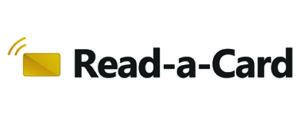RFID card reading software for Installers
Read-a-Card is very popular within the physical access control and security industry, as it provides a flexible, low-cost solution for identifying, reading and analysing the many different types of RFID cards and tags used in this market.
Most modern contactless technologies supported
Most door access systems use radio-frequency identification (RFID) technology to store and transmit a unique card-holder identity code from their card to a reader mounted on the wall. Popular high-frequency 13.56MHz RFID technologies used in this market include MIFARE, HID iClass and FeliCa, while older systems use various low-frequency 125KHz technologies including HID Prox.
Read-a-Card aids user enrollment
The process of adding a user to a system, also known as enrollment, usually involves entering all of the user’s personal data at the point of card activation, or calling up an existing database record for that user, and adding their card details. This will ‘tie’ the user to a specific pre-programmed card ID and will typically enable the card for use at the door within a short period of time.
Crucially, many PC-based systems used for enrollment do not have the built-in ability to read ID data from a card using a general purpose USB desktop smart card reader. Some systems use a ‘Weigand converter’ to enable a standard wall-mounted door reader to be connected to a PC, but this is not ideal, since these readers are usually expensive and require separate power supplies and mounting panels.
Alternatively, some systems require the operator to ‘swipe’ the card past a nearby door reader, and then look up the ID using the access system logs before it can be stored against the user’s record.
Read-a-Card helps to automate this process by enabling quick and easy card ID reading on a PC, using low-cost desktop readers from a wide range of suppliers. It can read multiple card types, technologies and data formats, and therefore provides future-proofing against the introduction of different card technologies and systems.


